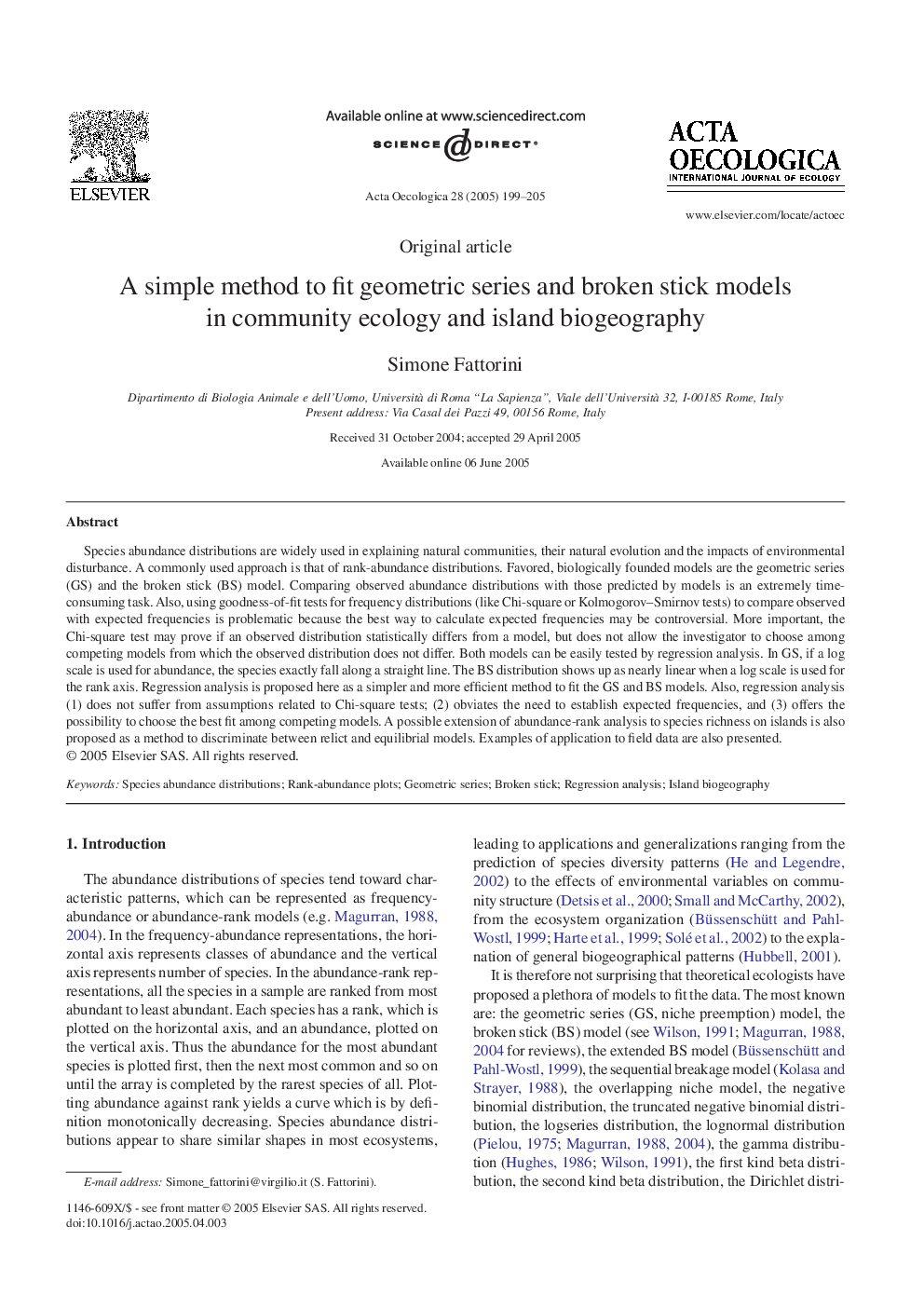| Article ID | Journal | Published Year | Pages | File Type |
|---|---|---|---|---|
| 9444957 | Acta Oecologica | 2005 | 7 Pages |
Abstract
Species abundance distributions are widely used in explaining natural communities, their natural evolution and the impacts of environmental disturbance. A commonly used approach is that of rank-abundance distributions. Favored, biologically founded models are the geometric series (GS) and the broken stick (BS) model. Comparing observed abundance distributions with those predicted by models is an extremely time-consuming task. Also, using goodness-of-fit tests for frequency distributions (like Chi-square or Kolmogorov-Smirnov tests) to compare observed with expected frequencies is problematic because the best way to calculate expected frequencies may be controversial. More important, the Chi-square test may prove if an observed distribution statistically differs from a model, but does not allow the investigator to choose among competing models from which the observed distribution does not differ. Both models can be easily tested by regression analysis. In GS, if a log scale is used for abundance, the species exactly fall along a straight line. The BS distribution shows up as nearly linear when a log scale is used for the rank axis. Regression analysis is proposed here as a simpler and more efficient method to fit the GS and BS models. Also, regression analysis (1) does not suffer from assumptions related to Chi-square tests; (2) obviates the need to establish expected frequencies, and (3) offers the possibility to choose the best fit among competing models. A possible extension of abundance-rank analysis to species richness on islands is also proposed as a method to discriminate between relict and equilibrial models. Examples of application to field data are also presented.
Related Topics
Life Sciences
Agricultural and Biological Sciences
Ecology, Evolution, Behavior and Systematics
Authors
Simone Fattorini,
